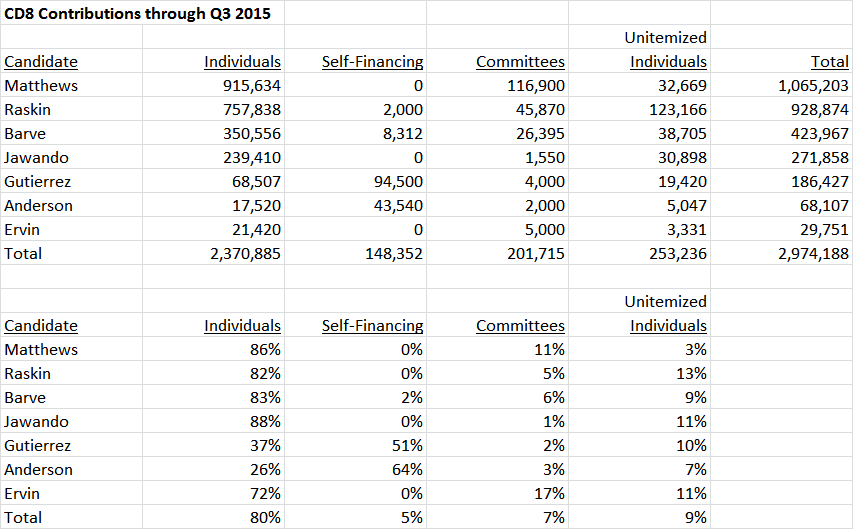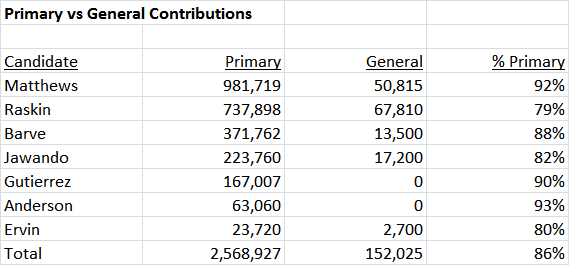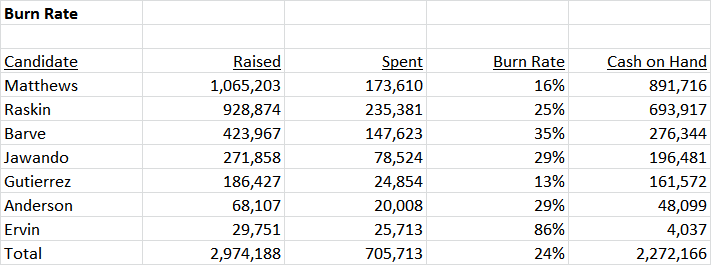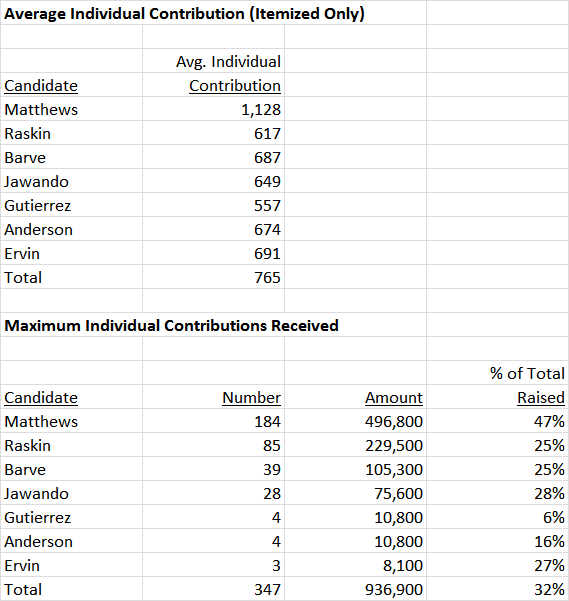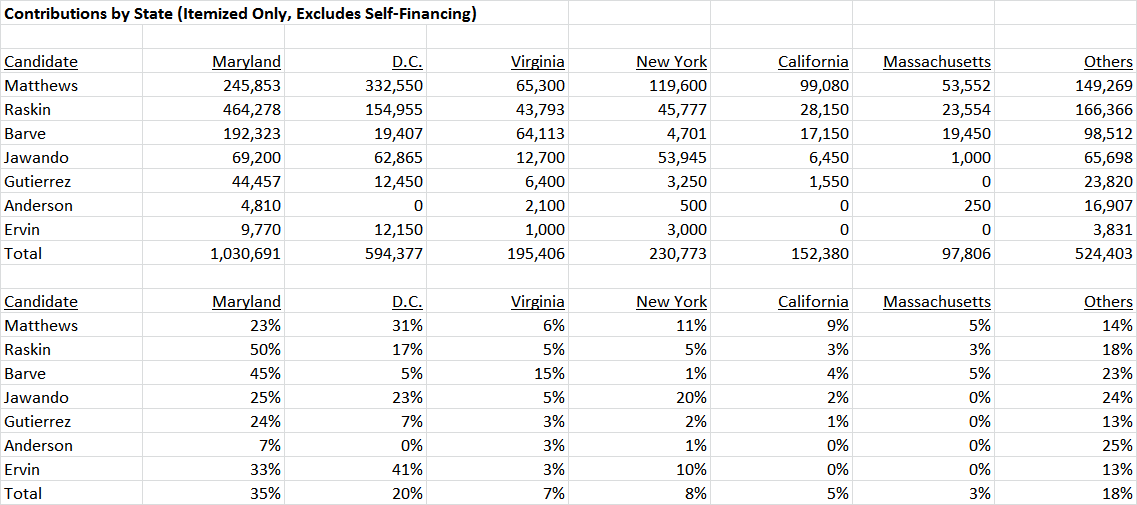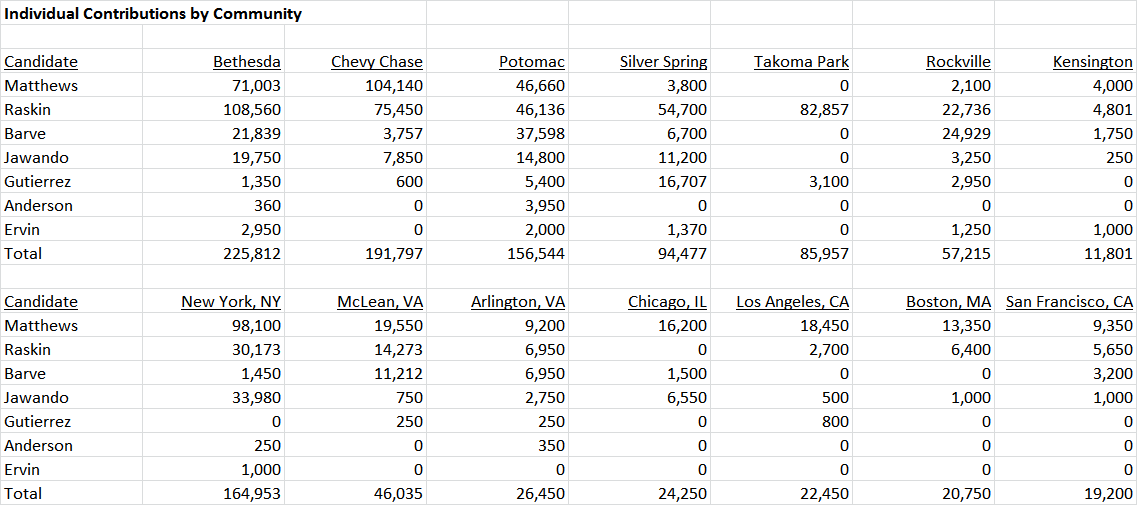Sen. Jamie Raskin has just gained a valuable endorsement from the Progressive Action PAC, the political arm of the 72-member Congressional Caucus, in his bid for the Democratic nomination in the Eighth Congressional District.
Why is this good for Jamie Raskin?
Validation. Jamie Raskin has campaigned as the progressive leader in the race. This endorsement provides important validation for his message from national leaders. It’s fine to have have a message but candidates need other leaders to vouch for it.
Spotlight. Other candidates in the race are also trying to position themselves as strong progressives. This endorsement sends the message that Jamie Raskin is the progressive choice. Put more bluntly, progressives should rally around this candidate.
Money. While the Progressive Action PAC will undoubtedly provide some money directly to the campaign, the endorsement is even more useful as a signal to donors. It reinforces the endorsements from other progressive groups and leaders.
Effectiveness. The endorsement makes clear that Jamie Raskin is the candidate with whom other progressives in Congress want to work. The established relationships indicated by the endorsement suggests that he would find more doors already open.
Beyond an Identity Group. Del. Kumar Barve has won support from Asian Americans in Congress while EMILY’s List has gotten behind Kathleen Matthews’ effort. No question that support from these groups is extremely valuable in multiple way. Not having them would send a negative message. But endorsements from issue-based groups allow a candidate to build beyond an identity constituency.
From the press release put out by the Raskin campaign:
SILVER SPRING, MD – Progressive Action PAC, the political arm of the 72-Member Congressional Progressive Caucus, announced today that it has endorsed State Senator Jamie Raskin in his campaign for Congress in Maryland’s 8th District.
“Jamie is a passionate progressive, has a proven record of legislative accomplishment, and has put together an impressive grassroots campaign that engages in serious policy discussion about the critical issues of our time, including gun safety, criminal justice reform, and environmental change,” said Congressman Raul Grijalva, co-chair of the Congressional Progressive Caucus. “I am endorsing Jamie because I know he will be an effective progressive leader for the people of Maryland when he comes to Congress.”
“I’m honored to endorse Jamie Raskin for Congress. He’s not just a progressive activist but a national thought leader and a seasoned legislative actor who gets things done,” said Congressman Keith Ellison, co-chair of the Congressional Progressive Caucus.
“With Jamie Raskin, Maryland Democrats have the chance to send to Congress one of the country’s most effective progressive leaders,” said Congressman Mark Pocan, First Vice-Chair of the Congressional Progressive Caucus. “Whether it is voting rights, campaign finance reform, gun violence prevention, environmental progress or civil rights and liberties, Jamie has delivered time and again as a Maryland State Senator and a respected professor of constitutional law. I’m endorsing Jamie because we need him to stand up in Congress for the American people against big-money special interests and to defend the Constitution and Bill of Rights against the Tea Party.”
The Congressional Progressive Caucus (CPC) is the largest caucus within the House Democratic Caucus and consists of 72 Congressional members. Founded in 1991, the CPC is a diverse and powerful caucus that advocates for a strong progressive agenda. Progressive Action PAC is the political arm of the Congressional Progressive Caucus and endorses candidates for Congress across the country who champion progressive change in America.
“What an honor,” said Senator Raskin. “I want to thank the Progressive Action PAC and Members of the Congressional Progressive Caucus for their support. I’m inspired and fortified by great leaders like Congressman Grijalva, Ellison and Pocan, and I will work with all the Members of the Congressional Progressive Caucus to go out and elect a Democratic Congress and a progressive agenda.”
Senator Raskin added: “I’m running on a decade-long record of effective progressive leadership in Annapolis. I want to go to Congress take on the NRA to pass common-sense gun reform, to combat climate change and break from the carbon barons, and to address the striking economic and political inequality in America that is eroding the middle class and thwarting opportunity for millions of people.”


